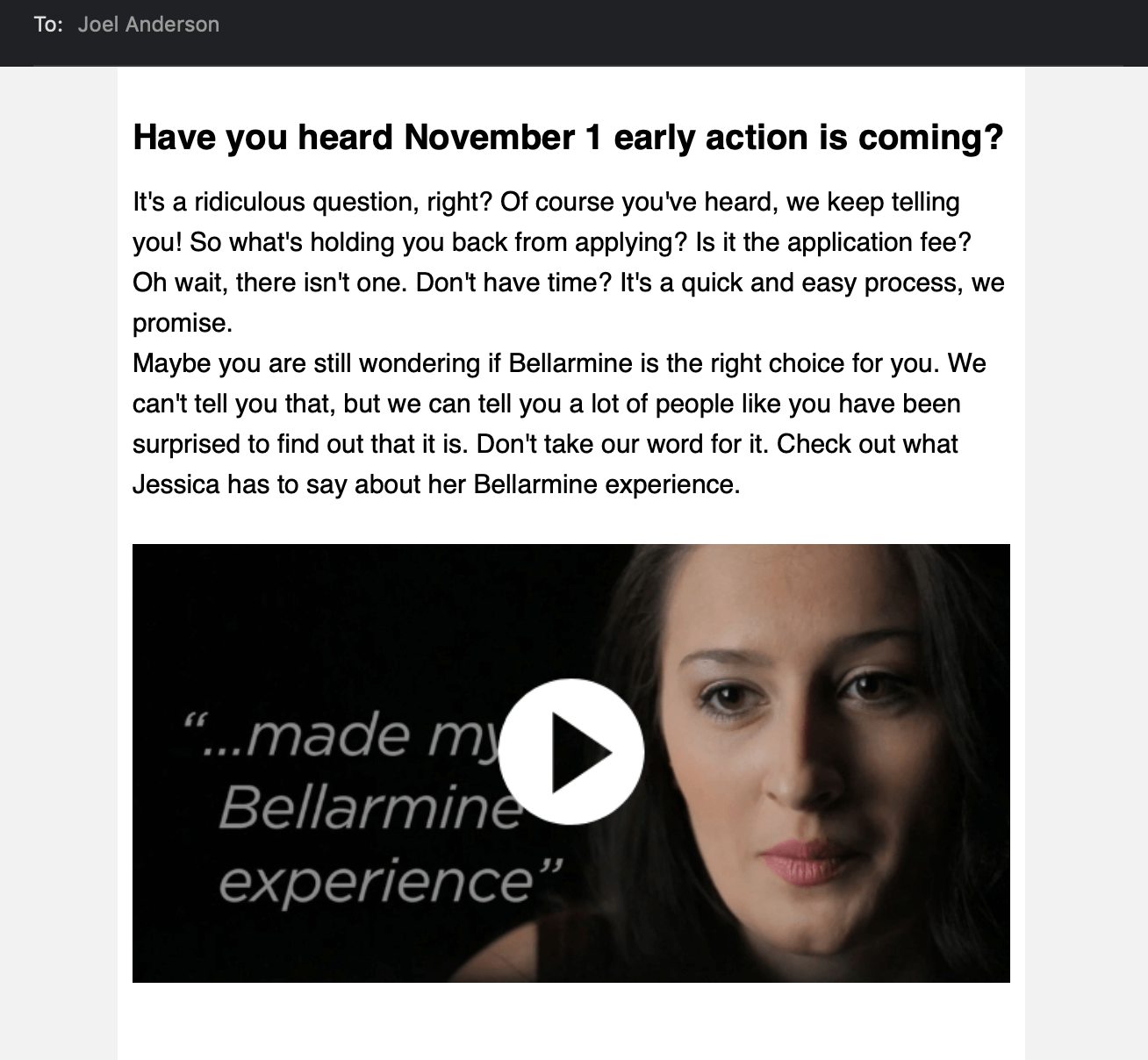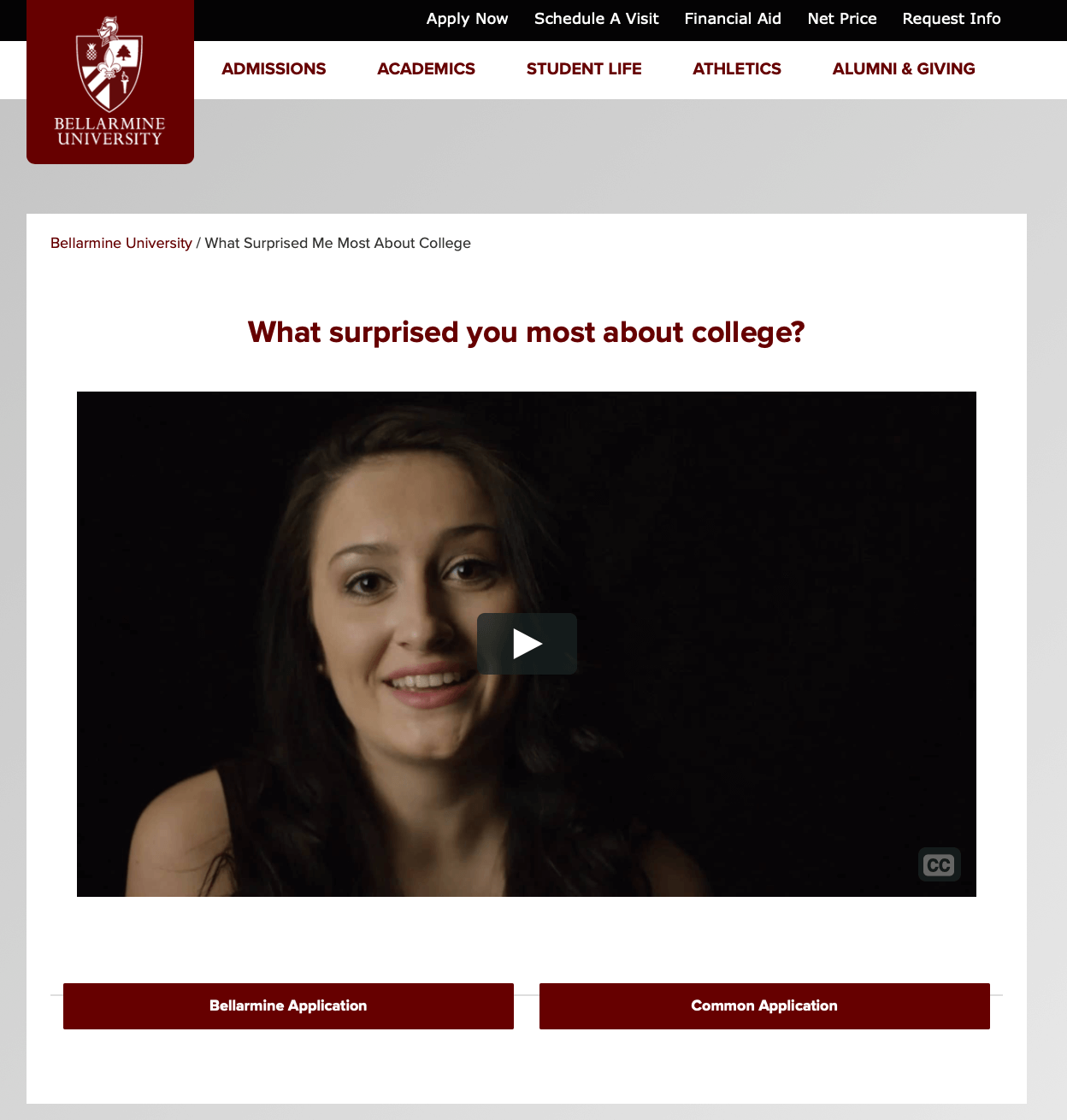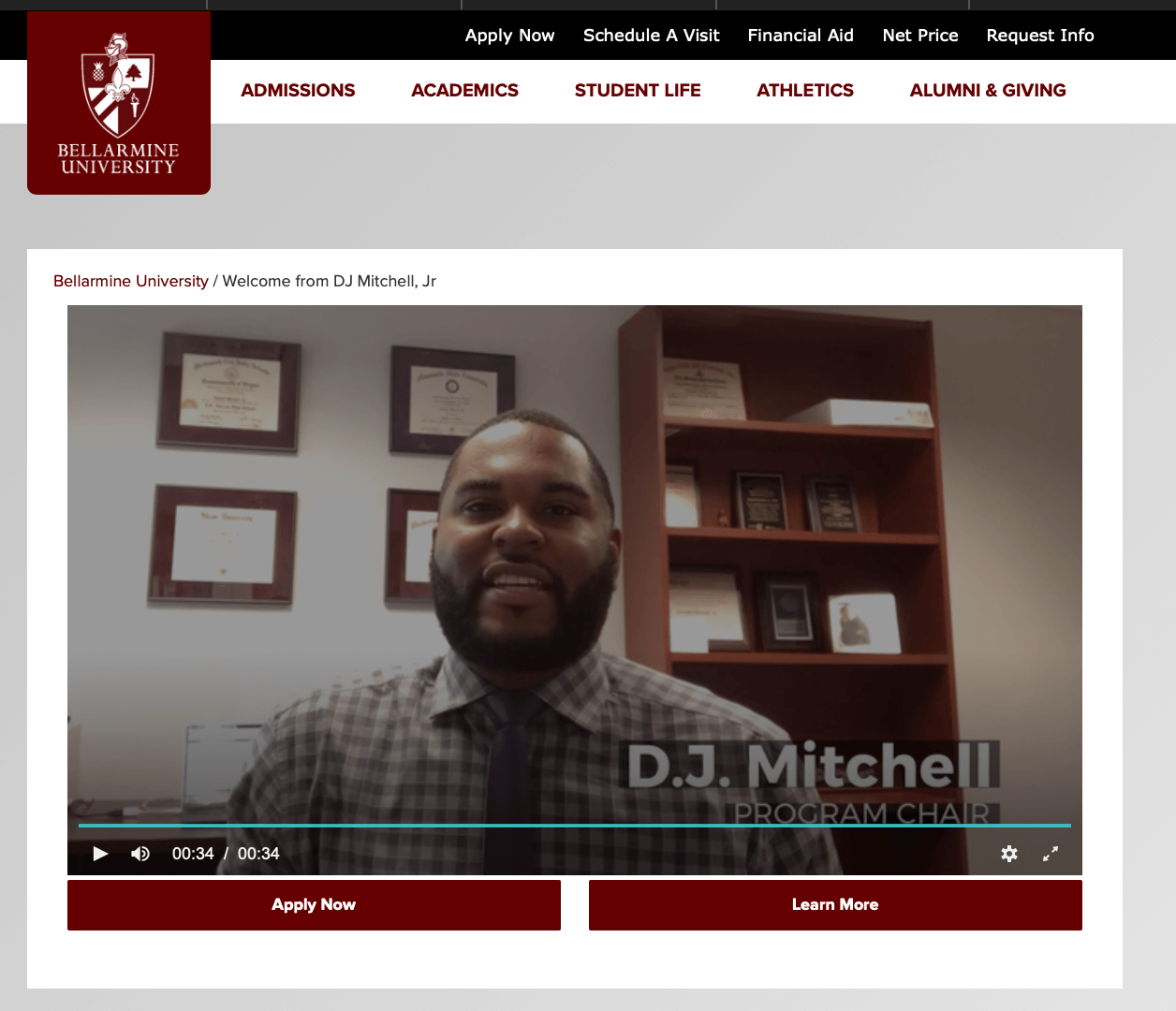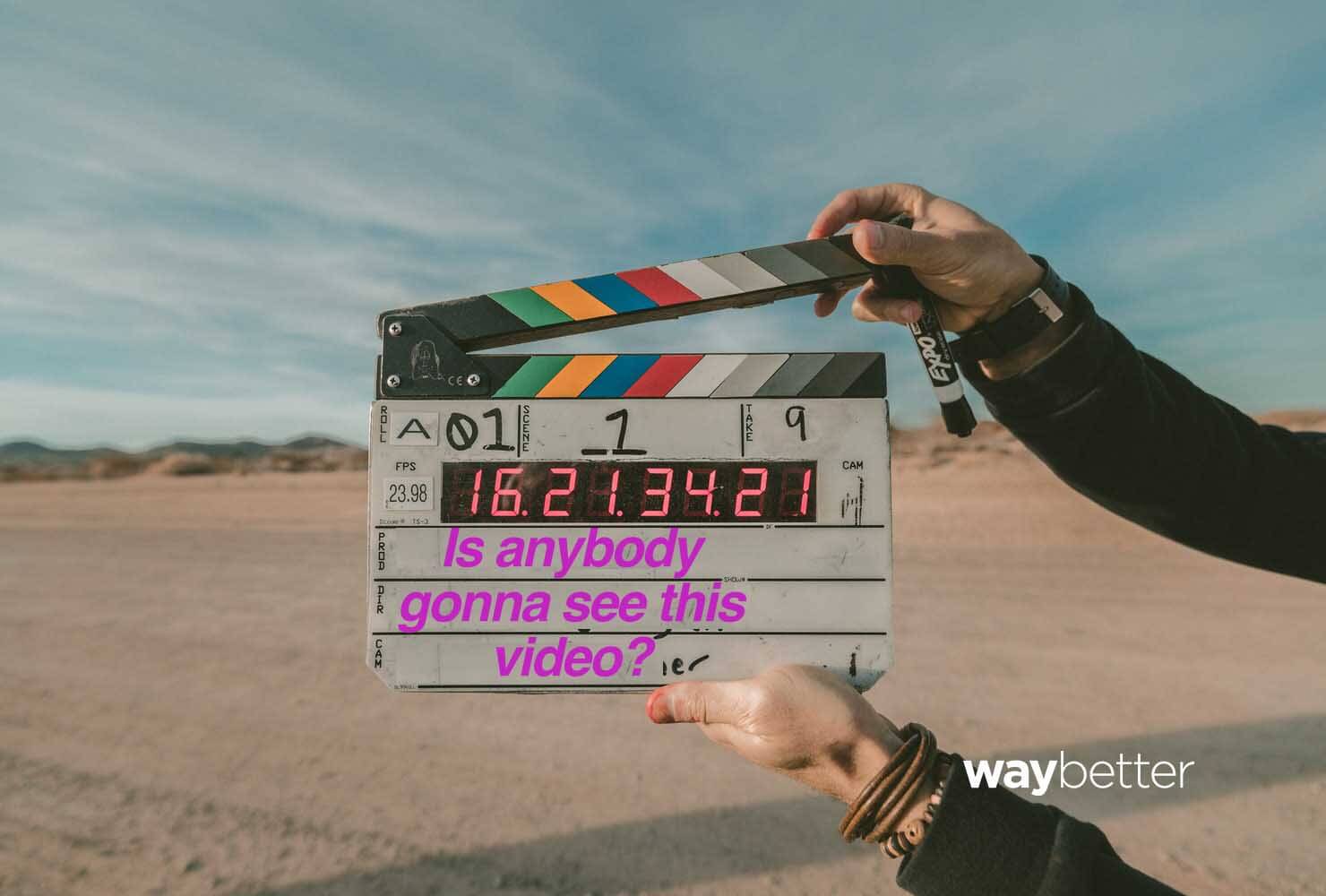Ah, video. The thorn in the side of underfunded, understaffed higher ed marketers everywhere.
It was just a few short years ago that we were told to scrap every other medium and go all in on the digital strategy that was—or so the Silicon Valley titans told us—preferred by millennials and Gen Z’ers who no longer wanted to consume their content by, gasp, actually reading it.
Yeah, about that. Turns out the pivot to video wasn’t all it was cracked up to be. Facebook and YouTube messed with the stats, and even when they didn’t, the metrics they offered as ROI were dubious at best. (Did you know Facebook still counts your video as being “viewed” if someone watches just three seconds of it? That’s… crazy, right?)
But in between then and now, we took the bait.
We invested in pricey tools. We hired personnel. We got pretty good at producing videos, or, at the very least, hiring agencies to produce videos for us.
We learned some things along the way, sure. And, of course, video can be a powerful medium when it’s done right. But for the most part, on most of our campuses, video still plays an undefined role in initiatives that actually and directly affect the bottom line. There are a few reasons for this:
1) Producing videos is expensive.
If you’re going out of house for your video work, it’s especially expensive. Story boarding. Script writing. Lighting. Sound production. Editing. Licensing music. Motion graphics. It all adds up. It’s also been my experience that two different production companies can charge wildly different amounts for the same project—this makes it hard for non-pros to accurately and fairly evaluate proposals. When should you spend $2k on a video? When should you spend $20k on a video? (Short answer: If you have a small budget, probably never!) What’s the difference between the two? And how will you ever know if it was worth it?
2) Producing videos takes time.
Even if you invested in in-house resources, producing a high-quality video is a time-intensive endeavor. Want to interview a couple professors about their awesome new research? Great! Now you have to schedule the interviews. Do the interviews. Edit the interviews. Get enough relevant b-roll to make the final cut not super boring. Then edit the b-roll. Then edit it all together. Etc. But you have to make sure to not make it too long because nobody (certainly not the teenagers you’re recruiting!) watches whole videos about research happening on a campus they’ve never heard of. So your final cut, after all that work and all that captured footage, clocks in at one minute and thirty seconds. Was it worth it? Was it more worth it than taking a photo and writing a quick article or blog post? Again, how do you even know?
3) Distribution is tricky.
But it’s where ROI happens, so you better get it right. After all, if nobody sees your video, all that time and money were a giant waste. There’s no getting around that fact.
So, how can you get your video in front of your most important and biggest audiences? If you’re an enrollment marketer, the answers are pretty obvious: email and social.
Seems simple, right? Well, sorta. Social is difficult because of the way the big platforms mess with the algorithm. Unless you pay, it’s hard to get your most important marketing messages in front of the right people—even if they follow you and actively want to see stuff you post.
Email, on the other hand, is almost entirely within your control.
If you write a good subject line, craft some compelling body copy, and include a strong call to action, you can draw lots of attention to the videos you’re hoping your target market will see. You also have the added bonus of being better able to align your video messaging with the proper segment. For example, you can send a video about your great academic programs or your beautiful dorms to students you’re encouraging to apply—organic (unpaid) social media, especially on a primary institutional account, tends to be a little more spray and pray.
Given all the foregoing, here are three things to keep in mind when you’re linking to videos in your enrollment marketing messaging.
Special thanks to our partners at Bellarmine University in Louisville who gave us permission to use their awesome work as a case in point.
1) Embed your video on a landing page that promotes action, i.e. STOP LINKING DIRECTLY TO YOUTUBE!
I inquire at colleges and universities all over the country, and I get lots of great stuff in my inbox every day from talented and thoughtful marketing teams. But one of the things that I see over and over again that just does not make any sense to me is when a “watch video” link in an otherwise well-built email takes me straight to YouTube.
Sure, once there I can watch the video they want me to watch, but there’s also a whole bunch of other stuff there to distract me. Pretty soon, I’m watching 1995 Michael Jordan highlight compilations with absolutely zero recollection of how I ended up there. There goes your conversion.
So, instead of sending your prospects somewhere distracting, consider this example. First, write a simple, single-purpose email, like this one from Bellarmine. Sure, the message is about applying, but there’s only one thing for me to do: watch the video.

When I click the linked image, it doesn’t take me to Bellarmine’s YouTube page. Instead, it takes me to a wonderfully, pristinely simple landing page that allows me to 1) watch the video, and 2) click through to the desired action: apply! And bonus points for providing clear links to both their own app and the Common App. It’s remarkable both in its simplicity and in its rarity—I just don’t see this often enough. It looks great on mobile too.

2) Keep your video landing pages simple.
See the previous paragraph. This is well-trod territory for digital marketers, but landing pages are supposed to be simple and clear. You’ve already done so much to get your audience here—don’t confuse them now!
3) Don’t get too hung up on “quality.”
Yes, of course, you should always seek to make high-quality marketing collateral. But “quality” doesn’t always have to mean high polish. Consider this example from one of Bellarmine’s online grad programs in education.

Here we have a simple, high-touch intro email from the grad program’s director with a link to a video where he can elaborate just a little more.

I love a couple things about this. Most importantly, this approach understands that even people applying to an online program want the process to feel personal and real. And this video—even though it’s just one take, filmed in an office, with minimal production fussiness—checks all the boxes. Professor Mitchell has made me feel welcome and given me clear instructions on how to get my questions answered. I’d actually argue that its lack of big-budget production values is a key ingredient of its success and high quality—it doesn’t feel slick or really even like “marketing” at all.
Instead, it feels honest and earnest—authentic. Which is one of the great abilities of video marketing to begin with: to let us see for ourselves what’s out there so we can make as informed a decision as possible. (If that’s not on-brand for an institution of higher ed, then I’m not sure what would ever qualify.)
Joel Anderson is Waybetter’s VP of Marketing & Strategy.
